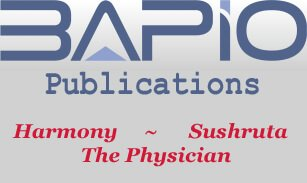FIRMST2020-AB49
LATANOPROST AND BIMATOPROST, SO SIMILAR, BUT WHICH IS BETTER?
FIRMST2020-AB49
LATANOPROST AND BIMATOPROST, SO SIMILAR, BUT WHICH IS BETTER?
Karishma SHAH
DY Patil University School of Medicine, Navi Mumbai, India.
Aim:
To compare the efficacy of 2 prostaglandin analogs in the treatment of Glaucoma
Keywords: Latanoprost, Bimatoprost, Primary Open Angle Glaucoma (POAG), Water Drinking Test (WDT), Intra ocular pressure (IOP).
correspondence karishma.shah0310@gmail.comconflict of interest none
Article InformationDOI:
10.38192/1.6.3.firmst20.ab49Epub: 20.09.2020Presented at FIRMST Conference, Moscow 2020Peer reviewed by JS Bamrah, Ananthakrishnan Raghuraman, Soumit DasguptaOpen Access- Creative Commons Licence CC-BY-ND-4.0
Introduction:
Both Latanoprost and Bimatoprost are Prostaglandin analogs, which are first line treatment for Primary open Angle Glaucoma (POAG), but we took a closer look into their comparative efficacy with some simple office procedures.
Aims:
1.To compare the peak and rise of Intra ocular pressure (IOP) from baseline during the modified Diurnal Tension Curve (mDTC) and Water Drinking Test (WDT) achieved using 2 different prostaglandin analogs in 2 eyes of the same patient with symmetrical damage; and thereby analyze the efficacy of both drugs in blunting the IOP spike.
2. To assess the relationship between the peak IOP by water drinking test and the peak of modified diurnal curve.
3. To establish the importance of water drinking test in the present day scenario.
Materials and methods:
This was a prospective, observational and interventional study over a period of 8 months done at Aditya Jyot Eye Hospital, Mumbai.31 subjects (62 eyes) with mild-moderate bilateral symmetric Primary Open Angle Glaucoma (POAG) were started on eye drops Bimatoprost (0.03%) in the right eye and Latanoprost (0.005%) in the left eye and were followed up after 3 weeks for water drinking test (WDT) and modified diurnal tension curve (mDTC)
Results:
At the end of our study we found that the right eye on bimatoprost (0.03%) showed lower peak IOP’s , and lower difference between peak and baseline IOP measured over the whole day (mDTC) and on provocation (WDT) compared to the left eye on latanoprost (0.003%). We hence propose that bimatoprost may have more IOP lowering efficacy than latanoprost.The WDT showed a definite peak at 30-45 min in all patients that would have been missed in routine clinic single IOP recording.Both mDTC and WDT recorded a rise in IOP from baseline, but the difference between baseline and peak IOP’s was significantly higher in WDT than in mDTC, and the peaks of both did not correspond.
Conclusion:
This study corroborated previous reports that demonstrate the clinical applicability of WDT as a useful tool in assessing the status of the eye’s outflow facility and determining IOP peaks that would otherwise have been missed in routine clinic IOP measurements. Furthermore prospective studies are required to evaluate the IOP peaks and fluctuations with both drugs and a greater sample size to compare their IOP lowering efficacy on a larger scale.
If you are interested in publishing your conference abstracts with us
If you are interested in publishing your conference abstracts with us
Please contac the editorial board for peer review and publication in the The Physician Journal of International Health



